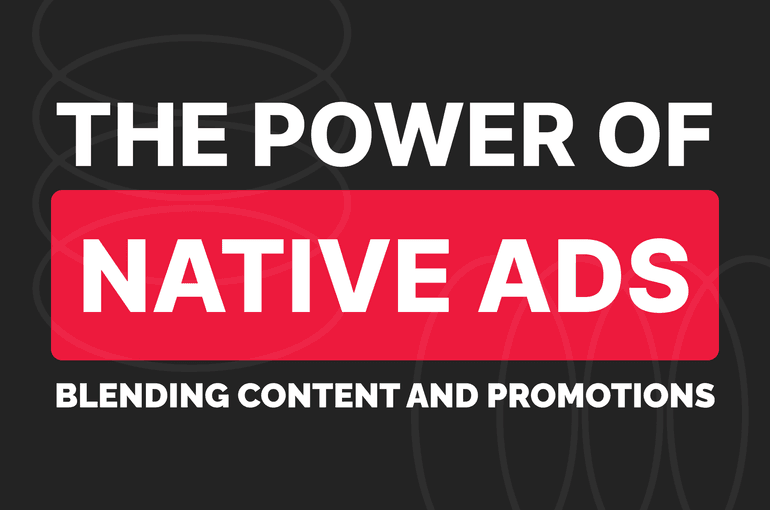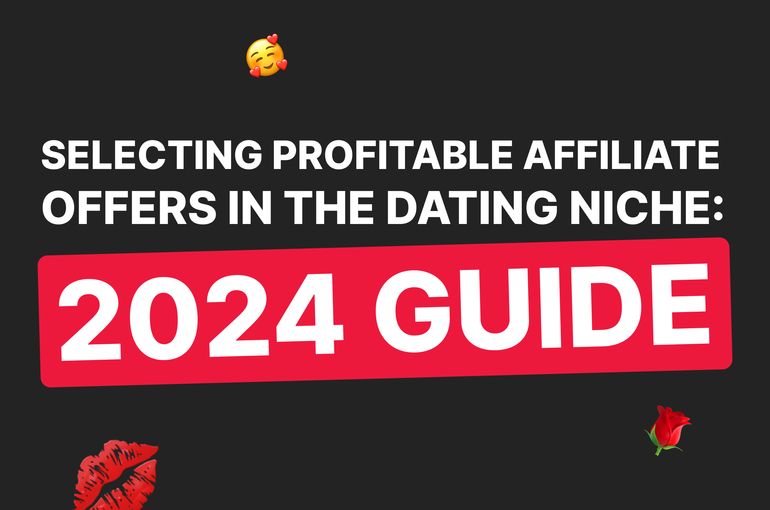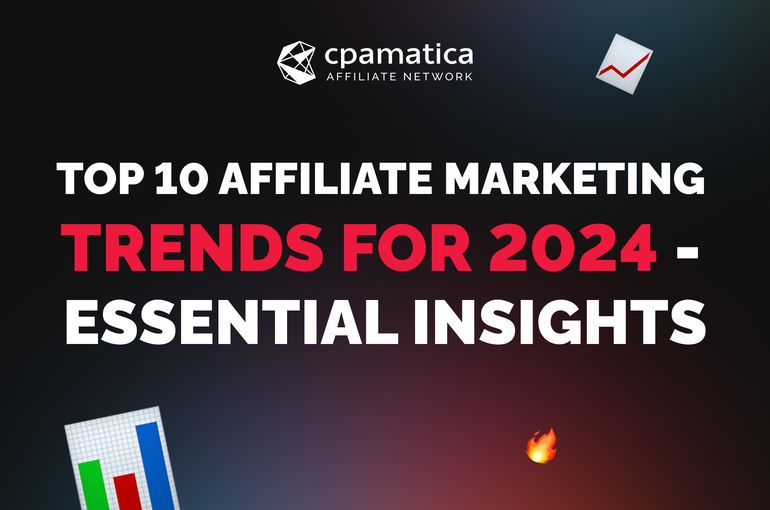The Power of Native Ads: Blending Content and Promotion

Native ads are like a mythical animal: some people believe in them, while others have real proof of their effectiveness. My opinion is that any ad can work, and whether it's native or not doesn't matter as much as people think.
Sure, you might see a slight increase in conversions, like from 3.2% to 3.5%. But in small arbitrage routines, it doesn't matter much. However, if you’re dealing with big numbers or in a competitive niche where every point counts, you're in the right place! Here, you'll learn how native ads can annoy people more than regular ads and why they're such a mystery, while YouTube pre-roll ads are a direct path to frustration.
- Benefits of Native Advertising
- Types of Native Ads
- In-Feed Ad Units
- Promoted Listings
- Content Recommendations
- Branded or Sponsored Content
- Designing Effective Native Ads
- Best Practices for Implementing Native Ads
- Integration with Content Strategy
- Measuring Performance and Optimization
- Challenges and Considerations in Native Advertising
- Regulatory Compliance and Disclosure Requirements
- The Future of Native Advertising
- Conclusion
Benefits of Native Advertising

If we compare Native Advertising to Standard Advertising, in the ideal world of marketing, we'll find that Native Advertising:
- Leads to more conversions.
- Is less annoying to the audience.
- Helps in long-term brand creation.
However, this only applies to regular native advertising, which is integrated into content. See, the actual definition of Native Ads is much broader. True Native Ads look like genuine recommendations. However, today's so-called Native Ads are integrated into platforms, like promoted listings or little images between content. For sales, it's a step forward, but for marketing, it's a step back.
For more insights on this, check out our guide about Tips to Pick the Best Affiliate Programs .
Types of Native Ads
So, the types of Native ADS are as follows:
Type | Native ADS definition | How It Works | Informal Commentary | Best Platforms |
|---|---|---|---|---|
In-Feed Ad Units | Ads seamlessly integrated into social media or news feeds. | Designed to match feed's design and content, blending naturally. | Boosts brand awareness without being too intrusive. | Social media (Facebook, Instagram, LinkedIn), news apps. |
Promoted Listings | Paid items listed prominently on search and e-commerce sites. | Ads appear above organic results in search, boosting CTR. | Great for advertisers seeking immediate reach. | E-commerce platforms (Amazon, eBay), search engines. |
Content Recommendations | Suggested articles or videos based on user behavior. | Contextual links at the side or bottom of a page, matching content. | Cohesive method to send users deeper into a publisher's site. | News sites, publisher networks. |
Branded/Sponsored Content | Custom articles, videos, or media paid by a brand. | Advertisers collaborate with publishers to create cohesive content. | Challenges traditional advertising by connecting naturally. | Social media, video sites (YouTube), blogs, news sites. |
In-Feed Ad Units
These ones have been extremely popular on Instagram lately. It's hard to tell if it's a paid advertisement or just a weird recommendation in your feed. Before there was a nationwide scandal about this type of ad, they were unmarked, and some arbitrageurs used them to make a huge profit.
Nowadays, I can't say this type of ad is truly native; it's just a common targeting ad with creative content that follows the in-feed content.
Who does it pass for? As with common targeting ads, it's primarily for impulsive purchases. But keep in mind that compared to common targeting, your content must match the media post or content you're placed on. In any other situation, it won't work.
Promoted Listings
When in-feed ad units mimic the target, promoted listings are a logical evolution of contextual advertising. To be honest, it's still not native ads; it's just advertising that mechanically forces you to see it.
Here’s what they’re famous for:
- Boost click-through rate and awareness.
- Assimilate with search results to reach a cohesive audience.
- Appears like traditional search results but is marked as sponsored.
- E-commerce platforms (Amazon, eBay), search engines.
- Connect with the audience naturally, even as paid content.
So you Google something: an item or a service, and Google, Amazon, or any other platform shows you ways to buy it. The trick is that for the last five years, you haven't seen organic results; you only see paid, promoted listings. And it doesn't matter if they mark them as ads or not; you don't see the organic results.
Content Recommendations
These are similar to in-feed ad units, but not actually in-feed. Such ads after your YouTube recommendation list or on the platform you're interacting with. They don't require specific observation.
Branded or Sponsored Content
Among all those previous types of ads that marketers call native, there's an actual native ad with branded content or sponsored content.
Here’s why it’s useful:
- Matches well with social media, particularly YouTube, blogs, and news platforms.
- Create a natural yet effective method to reach a cohesive audience.
- Collaborate with publishers to produce unique, engaging media.
- Social media, video sites (YouTube), blogs, news platforms.
- Design content that matches the platform's native style.
- Choose micro-influencers to maximize the reach of branded content.
Both are cool. Both are pieces of art. Both work in big numbers. And none of them work in small advertising campaigns. With one little exception: if you create very cool ads and promote them through micro-influencers by following the effective native ads rules.
Designing Effective Native Ads

Alright, when you read other articles, you'll see a lot of fluff about the rules for creating native ads. Here, I'll be completely honest with you!
First: If you're not a content creator with your own audience, you can't create perfect native ads. This is because you're trying to mimic content that isn't yours. Remember that; it'll save you a lot of stress later.
Second: To create native ads, you should follow two rules.
- Your Content Must Mimic the Donor Area — Native ads are freakishly expensive! If you want to run a big ad campaign, you should create personalized native ads for each platform and each influencer.
- Your Product/Brand/Service Must Be Noticeable — After viewing one native ad or a series of them, the viewer must understand what your product is and what you're recommending.
Lastly, one of the most important rules in designing effective native ads is that you can recommend and show the product, but you can't use psychological-emotional triggers or force people to buy it. If you do, the ads stop being native. Speaking of designing ads, A/B testing is a game-changer. Don't miss our detailed guide on Mastering A/B Testing in Affiliate Marketing .
Best Practices for Implementing Native Ads
Ok, when we're talking about best practices, we must strictly separate in-feed, promoted content, and recommended types of "native" ads, which are just hidden banners, from real native ads.
In the first case, it's enough to simply copy the standard visual style of the source. That's all it takes to mimic the platform where you want to advertise your product.
But when we're talking about real native ads, it becomes a little more difficult. I've noted the main design principles before, so let's explore how to stay native in the long term.
Integration with Content Strategy

So, first and foremost, the donor must have a content strategy. But, it's very difficult to find a donor who is a content creator with a strict content strategy. When you find one, you can recommend some of the following improvements based on that content strategy:
- Warm up the Audience
- Use native warming to ease them into your brand's concept.
- Create Themed Content
- Produce content on different themes that align with the influencer's fundamental content strategy.
- Include native ads naturally within this content.
- Feature Your Product
- Place your sponsored product in the frame if it's video or image content.
- Create a sketch highlighting your service if it's written content, or your advertised product can be statically put in frame.
Fundamentally, there are no hidden tricks or gimmicks—just be native. But the challenge lies in the exact advertising content quality and how well you mimic the influencer's or platform's style and content.
Measuring Performance and Optimization
To maximize the impact of your native ads, focus on tracking relevant metrics, optimizing creative elements, and refining your strategy through continuous improvement.
Step | Action |
|---|---|
Identify KPIs | Define CTR, impressions, conversion rate. |
Track Engagement | Monitor likes, shares, comments. |
Platform Metrics | Utilize social, video, and publisher insights. |
A/B Testing | Test different creatives, formats, and copy. |
Optimize Creative | Adjust visuals and copy for relevance. |
Retargeting | Serve follow-up ads based on prior engagement. |
Continuous Improvement | Refine content strategy using data insights. |
Challenges and Considerations in Native Advertising
The main difficulties in implementing native advertising in donor areas were described before. It's the mechanical challenge of mimicking content, the impossibility of creating effective short-term ads, and the disorganization of the donor platform.
Additionally, there are problems similar to common advertising, like overwhelming the audience, ensuring the quality of the advertised product/service, brand building, and maintaining the reputation of the blogger/area/platform donor, among others.
So, in theory, creating native content advertising is very simple, but in practice, it's a very difficult art!
Regulatory Compliance and Disclosure Requirements
You must always tell the truth about the product.
But there's a difference between truths. Even if you're working in questionable areas, you can manipulate these terms.
Also, always focus on the legal terms and conditions of the platform where you place your native ads.
The Future of Native Advertising

As in any other advertising niche, it's just a tool, nothing more. So, all we can hope for is that with new content types or new content platforms, there will be new native ads that mimic those types of content.
And please remember that in-feed ad units and promoted listings are powerful advertising tools, but they have nothing in common with true native ads.
Conclusion
Native advertising, whether it's mobile or desktop content, is an art form that requires a deep understanding of the donor platform's style and audience. While creating native ads is theoretically simple, the practical challenges of mimicking the donor area, maintaining quality, and navigating regulatory compliance make it a difficult but rewarding endeavor.
With the right concept, a clear goal, and respect for the platform’s audience, native ads can be a powerful tool to connect with consumers and boost brand awareness. If you're looking to join a site that can help you optimize your campaigns and achieve better results, consider joining Cpamatica for all your affiliate marketing needs.
Recommended Articles

Choosing the Right Affiliate Offers

10 Trends in Affiliate Marketing for 2024

